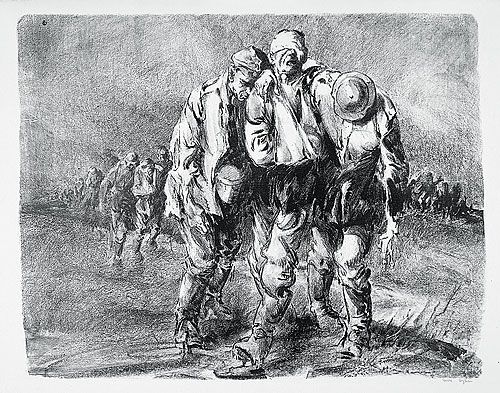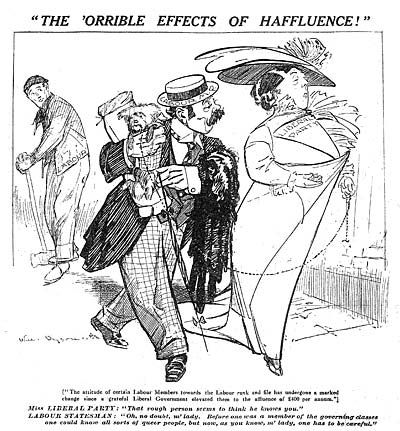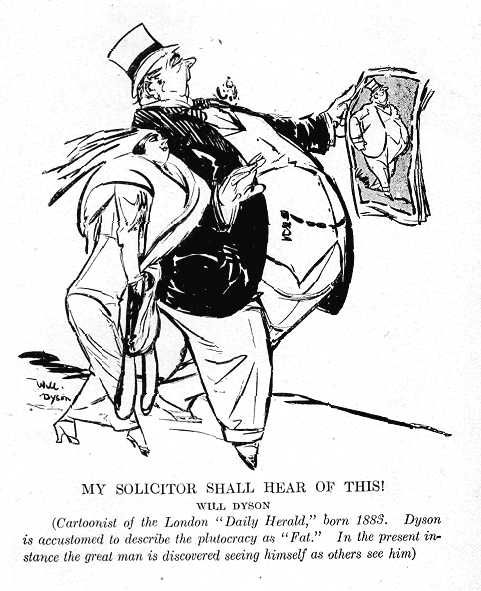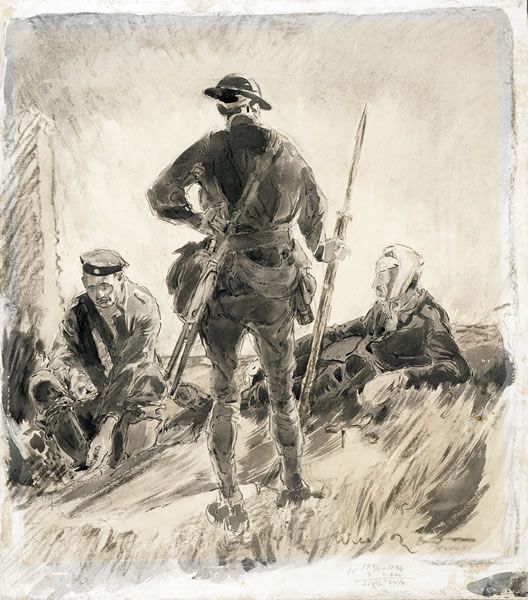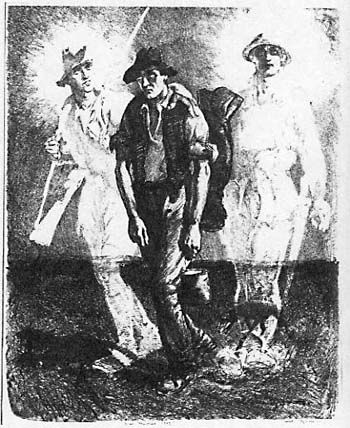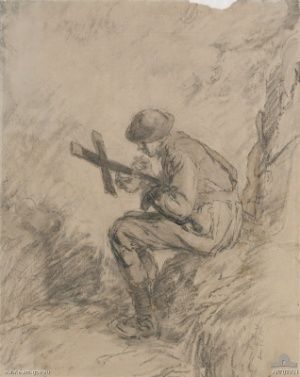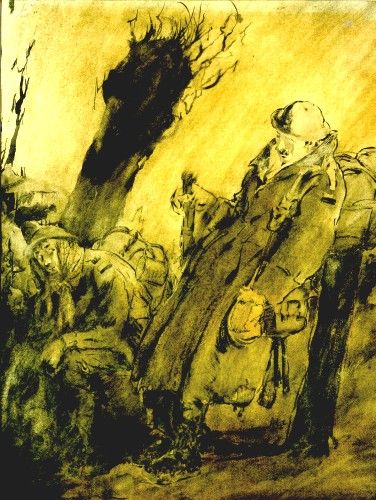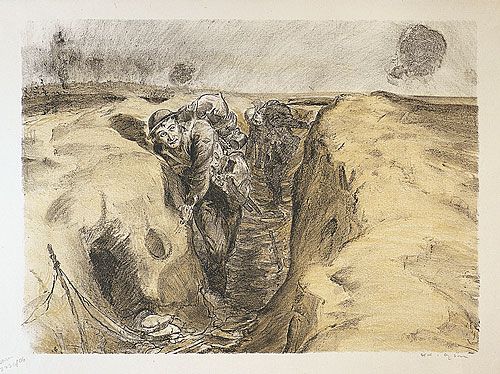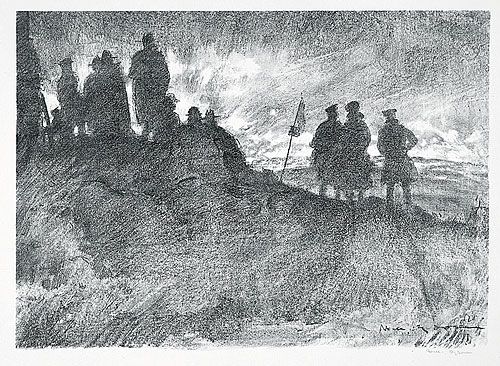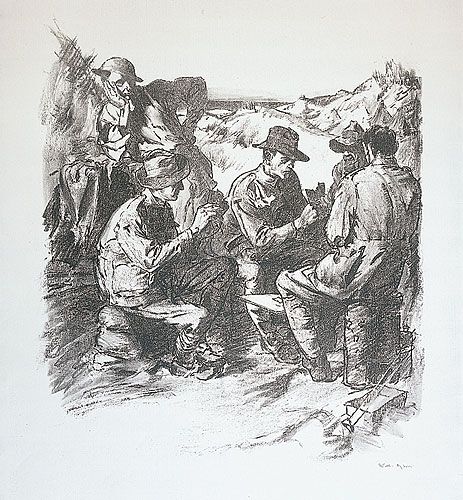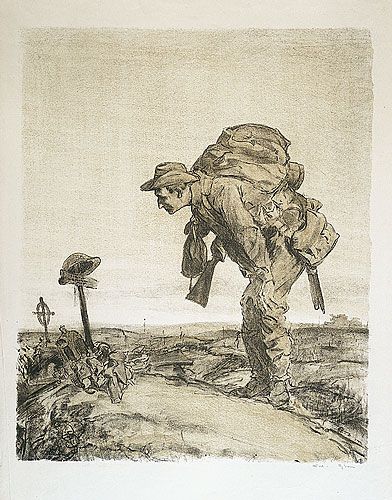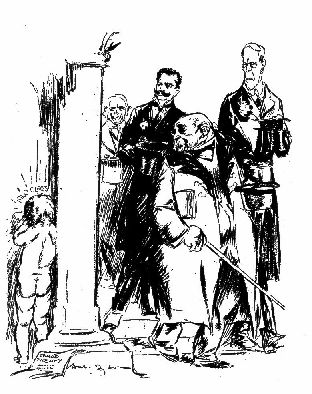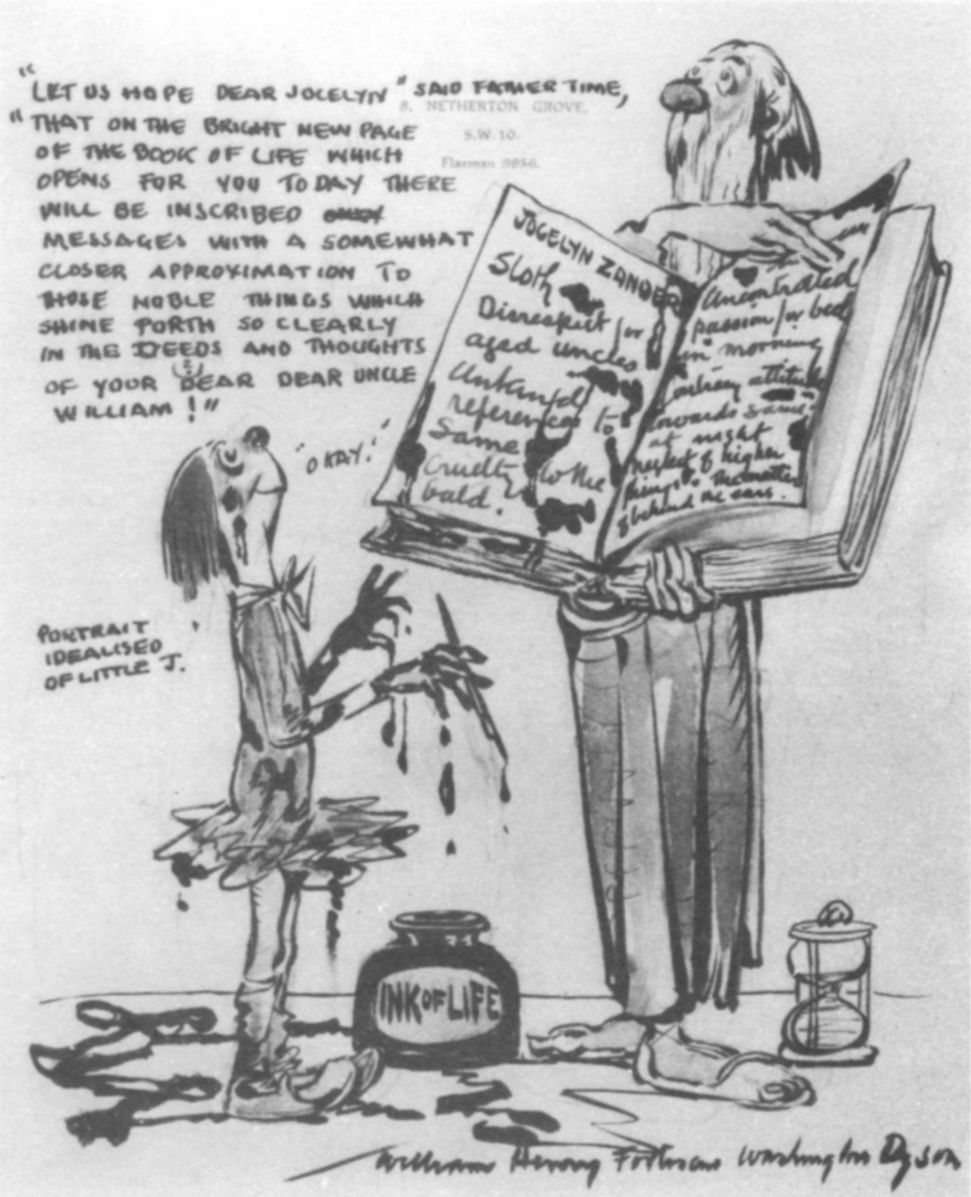Each day this month I will be profiling a notable political cartoonist. Since the choices are vast, I've decided to slim the numbers down a bit and eliminate living cartoonists. Perhaps I will do a current political cartoon stars in the future.
Here's an archive of the artists mentioned already.
Today we look at a hauntingly beautiful World War I war cartoonist whose sharp sense of justice continued after the war, as well.
Enjoy!
Will Dyson was born in Australia in 1880.
By 1900, he was contributing cartoons to local Australian newspapers and soon he gained a great reputation for a satirist, almost always of conservatives as Dyson, like his whole family, was a Socialist. He was given a staff job in Adelaide in 1904. In 1909, Dyson moved to England to pursue a career as a cartoonist there.
A turning point in his career happened in 1910, when the British printing industry was locked out in retaliation for attempting to negotiate for a 48 hour work week.
Soon, a strike sheet (a hastily printed paper) was produced to support the printers, and it was soon popular enough that even when the strike ended, there was proof that a left-wing newspaper could survive in England, and so the Daily Herald was born - and Will Dyson was a part of it from the beginning!
Dyson was left to his own devices - anything he wanted to opine about, he could. The Herald would often give him the entire front page if his work was interesting enough!
Dyson soon became one of the most popular cartoonists in England, and was offered jobs by much larger papers, but he loved the freedom and the social beliefs of the Herald, which often led to him being denounced, even by the British party that he supported, as he felt that they were not liberal ENOUGH.
Here's an absolutely brilliant piece of work Dyson did chastising the Labour Party for how they changed once they began getting some power in the British Government...
Dyson's Socialist background would come up in his cartoons often...
Dyson left behind his career as a popular cartoonist to enlist in the Australian Army and serve during World War I.
Dyson covered the war for the Australian GovernmentAustralian newspapers, and he produced what are some of the finest war-time cartoons ever.
Wine of victory (German prisoners captured at Ypres)
Here, Dyson takes the "haunting" term a bit seriously...
Christmas Memories
This following cartoon depicted something Dyson saw with his own eyes - a man carving a cross for a dead friend...
Reinforcements, between Igaree Corner and Lagincourt
Watching the barrage from Mont Kemmel
With the tunnellers near Nieuport
The following is likely his most famous of the War, and it's one of the best war cartoons that I've ever seen...
One of the old platoon
Following the war, back at the Herald, Dyson produced one of the most prophetic cartoons imaginable, and likely his most famous cartoon (it certainly gained a lot more attention in 1939), when he drew the following cartoon where he sneers at the Treaty of Versailles...
The cartoon depicts Woodrow Wilson, Lloyd George and Orlando of Italy leaving the Versailles peace treaty meeting with Clemenceau who is saying, 'Curious! I seem to hear a child weeping!'-the weeping child in the cartoon was labelled '1940 class'. Here, Dyson is suggesting that the effects of the Treaty of Versailles were going to start another war in 1940 - he was off by a few months.
Amazing.
Finally, on the lighter side of things, here is a birthday drawing Dyson did for a young niece of his - Dyson is the "Father Time" in the drawing - quite a self-deprecating drawing!
Dyson's wife, Ruby (of the notable Australian artistic family, the Lindsays), died in the great flu epidemic that followed World War I. Dyson was distraught with grief.The Versailles cartoon was actually the first piece of work he was able to bring himself to do for months after her death.
Soon, Dyson also felt that he lost the Herald, as it began becoming more moderate in an attempt to make more advertising money. He quit his gig and soon found that he was simply too radical to gain work anywhere ELSE.
Ultimately, he took a gig back in Australia in 1925. His work there, while not bad, lacked the fierceness of his British work.
Dyson died in 1938, before getting to see just how prophetic his work was.

